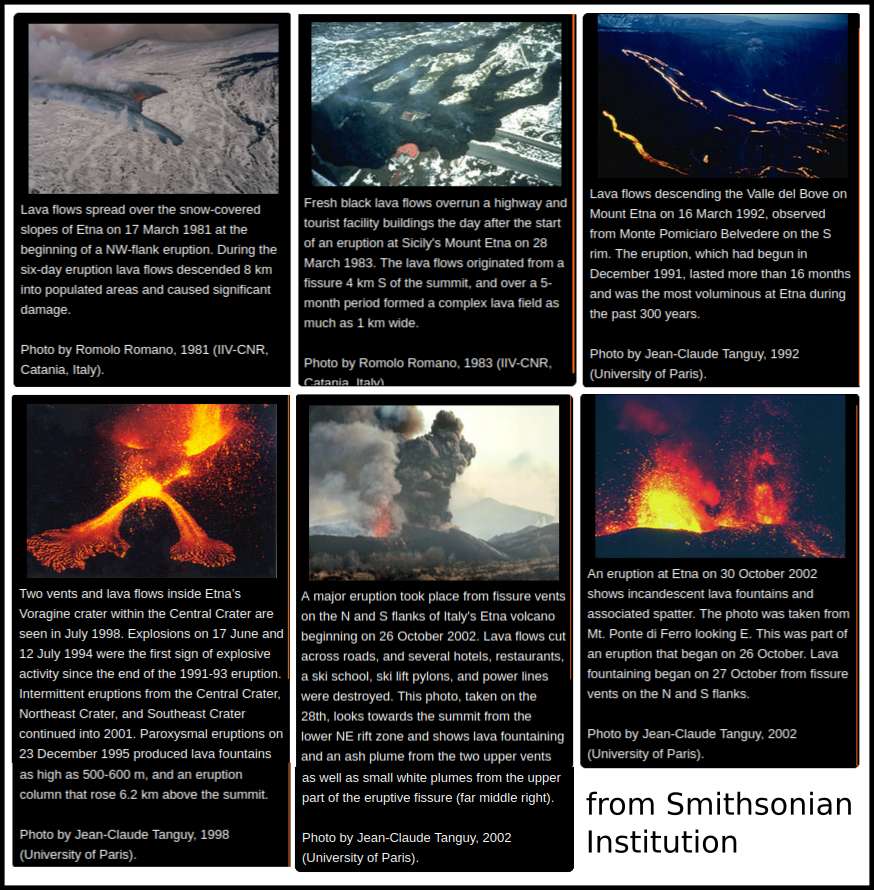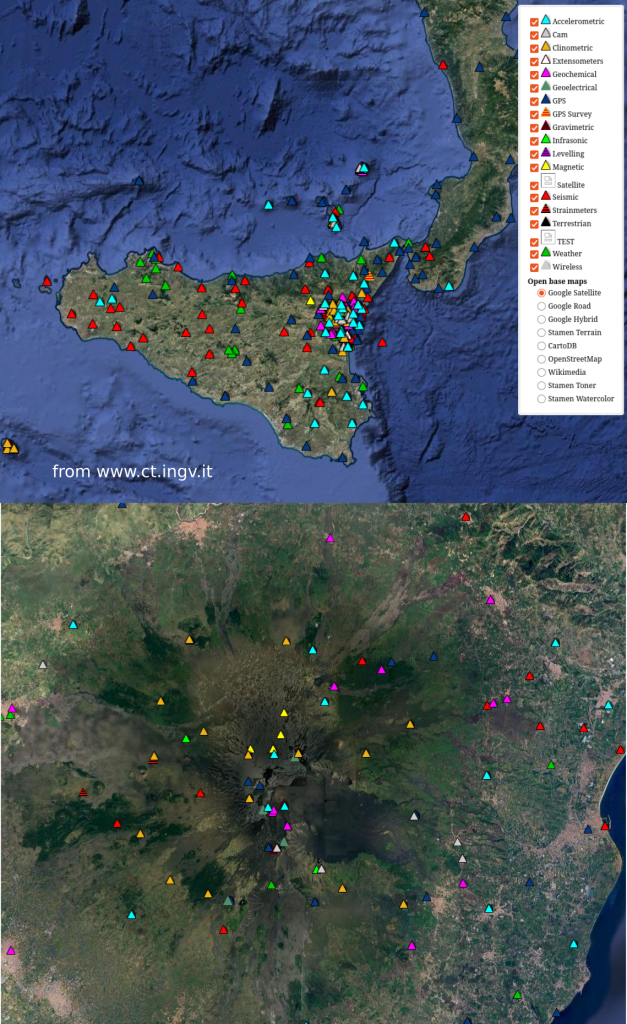Etna
Mount Etna, towering above Catania on the island of Sicily, has one of the world’s longest documented records of volcanism, dating back to 1500 BCE. This stratovolcano is high as 3324 m, which vary due to frequent eruptions, and covers about 1,200 km², making it the largest active volcano in Europe.
Mount Etna is one of the most active volcanoes on Earth, with:
– Persistent summit activity, including lava fountaining, ash plumes, and Strombolian explosions.
– Flank eruptions, which can occur at lower elevations and sometimes threaten populated areas.
– Effusive lava flows and explosive events from multiple craters:
Summit craters: Voragine, Bocca Nuova, Northeast Crater, Southeast Crater (and New Southeast Crater).
Flank fissures: Often open during more powerful eruptions.
Eruption styles include:
– Strombolian
– Vulcanian
– Lava fountains
– Occasionally sub-Plinian

- Lies at the convergent boundary between the African and Eurasian plates.
- Also influenced by local fault systems and back-arc basin dynamics in the Calabrian subduction zone.
Monitoring network
Mount Etna is one of the most intensively monitored volcanoes in the world, overseen by the Istituto Nazionale di Geofisica e Vulcanologia (INGV), Catania section.

The network includes:
🔸 Seismic Monitoring
- Dense network of broadband and short-period seismometers.
- Detects volcanic tremor, earthquakes, and explosions.
🔸 Ground Deformation
- Continuous GPS stations
- Tiltmeters
- InSAR (satellite-based radar interferometry)
🔸 Gas Emissions
- SO₂ and CO₂ flux measurements using:
- DOAS (Differential Optical Absorption Spectroscopy)
- FTIR (Fourier-Transform Infrared Spectroscopy)
- Multicomponent Gas Analyzer Systems (MultiGAS)
🔸 Thermal Monitoring
- Thermal cameras monitor crater temperatures and lava flows.
- Satellite thermal imagery (e.g., MODIS, Sentinel)
🔸 Visual and Acoustic
- High-resolution webcams
- Infrasound sensors detect explosive activity

Proudly powered by WordPress
